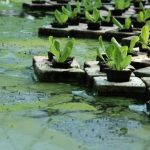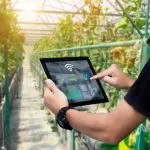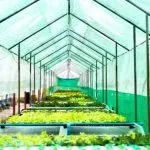As the cold winds blow outside, you might be wondering how to keep a grow tent warm in winter for your precious plants. You’re not alone. After all, maintaining optimal temperatures in your grow tent during those chilly months is crucial for the success of your hydroponic endeavors.
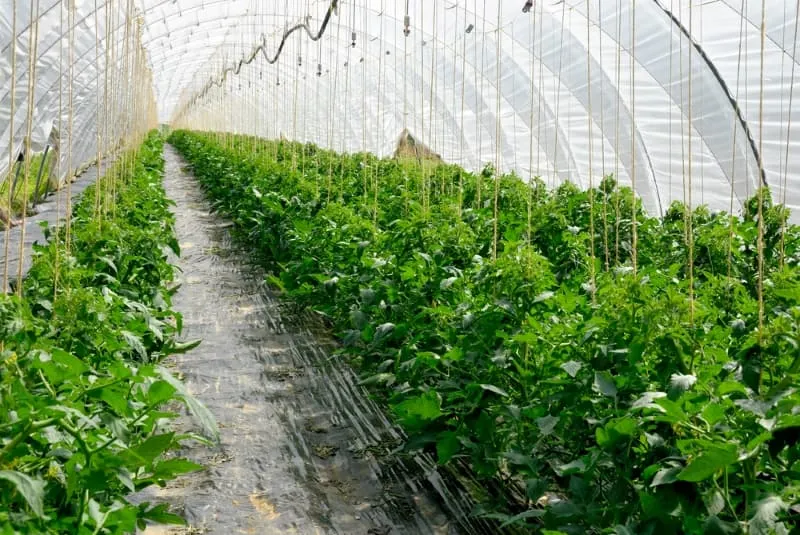
In this article, we’ll dive into simple yet effective methods to insulate your hydroponic grow tent when Jack Frost comes knocking. We’re talking about everything from heaters to insulation, thermostats to temperature control techniques. By the time you finish reading, you’ll be well-equipped to provide a cozy environment for your plants—no matter how cold it gets outside. So grab a cup of hot cocoa and let’s take a journey into the winter wonderland of hydroponics!
What Should The Temp Be In My Grow Tent?
The ideal temperature in your grow tent can vary depending on the specific needs of the plant you are growing, but generally, most plants thrive best within a range of 70°F to 85°F (21°C to 29°C) during their light period, and around 10-15 degrees cooler in their dark period.
For hydroponic systems, maintaining a slightly lower temperature can be beneficial due to the water’s ability to retain heat. The optimal range for a hydroponic grow tent is typically between 68°F and 72°F (20°C to 22°C).
Remember that these ranges can slightly differ based on the type of plant you’re growing. Some tropical plants might appreciate higher temperatures while others like lettuce prefer cooler conditions. Therefore, it’s essential to research the specific temperature needs of your plants for optimal growth.
Along with grow tent temperature, don’t forget about humidity control. Too much humidity can lead to mold or mildew problems while too little can dry out your plants. Usually, relative humidity levels between 40% -70% are recommended for most indoor grows.
Also note that these temperatures should be adjusted during different growth stages. For example, the seedling stage requires warmer temps compared to the mature plant stage.
Remember always keep an eye on your plants – they’ll show signs if they’re not comfortable!
Understanding Winter Challenges for Hydroponic Grow Tents
While hydroponics opens up possibilities for year-round gardening, it comes with its own set of challenges during the winter months. Let’s explore these challenges and how they might impact your hydroponic grow tents.
Temperature and Humidity Fluctuations
Temperature and humidity levels are crucial in any type of planting environment. In hydroponic grow tents, these factors become even more critical because plants are enclosed in a controlled environment where variations can have significant effects.
During the winter months, maintaining consistent temperature and humidity can be challenging. The cold outdoor weather can seep into the tent resulting in temperature drops that may not be optimal for plant growth. Additionally, heater use during winter times may create dry air conditions inside the tent, potentially lowering humidity levels and making it harder for plants to absorb water and necessary nutrients.
Insufficient Lighting
Lighting plays a vital role in plant photosynthesis – a process through which plants convert light into energy. If you grow hydroponic crops outdoors and use artificial lighting only to supplement sunlight, you’ll have to pay extra attention to this in winter. During winter, the days shorten leading to less natural light availability. This scarcity of light can have detrimental effects on your hydroponically grown plants if not properly addressed.
Inside a grow tent, artificial lighting sources provide the necessary illumination for plant growth. However, during winter months when natural light is limited, these artificial sources may need to work overtime to compensate—putting an additional strain on electrical consumption.
Cold Environment Impact on Plant Growth
In addition to controlling temperature and lighting inside the grow tent, the external cold environment also poses significant challenges to hydroponic growing systems during winter.
Cold temperatures outside the tent could lead to freezing or thickening of nutrient solutions used in hydroponics—impacting flow rates or even blocking tubes entirely. This situation could starve your plants of essential nutrients needed for growth.
Moreover, some plant species do not tolerate cold conditions well; they may experience slower growth rates or die off altogether due to exposure from uncontrolled cool drafts entering the growing space or direct contact with cold surfaces within it.
How To Raise Temperature In Grow Tent
If the winter temperatures are too low for your plants and you want to know how to increase heat in your grow tent, try one or more of these methods:
Selecting Appropriate Heaters
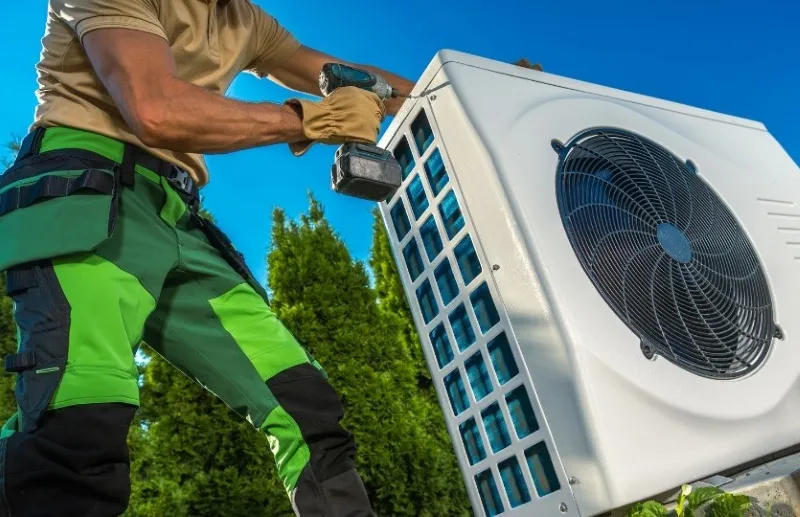
Choosing the right heaters for your grow tent is crucial in maintaining the desired temperature. There are several types of heaters suitable for hydroponic systems:
- Ceramic heaters: These heaters are energy efficient and distribute heat evenly. They operate quietly, a feature valuable for maintaining a calm environment in the grow tent.
- Oil-filled heaters: Widely used due to their efficiency, oil-filled radiators provide long-lasting heat even after they are turned off. They’re also quiet and safe to use.
- Fan heaters: A fan heater is another viable option due to its ability to quickly raise the temperature in the grow tent.
Remember that safety comes first, so always choose a heater with an automatic shut-off feature to prevent overheating.
Use a Grow Tent Heat Mat
Grow tent heat mats, also known as propagation or seedling heat mats, are remarkable temperature-regulating tools that keep your hydroponic system warm during cold winter months. These mats work by producing consistent low-level heat, boosting the root zone’s temperature and fostering an optimum environment for plant growth. Unlike other heating methods that may have fluctuations in temperature, these mats offer constant warmth directly to the roots of your plants.
Using a grow tent heat mat is relatively straightforward:
- Position Your Mat: Place your mat at the bottom of your grow tent or directly under your pots or trays.
- Set Up Your Plants: Position your plants or seedlings on top of the mat.
- Adjust Temperature Settings: Most models come with adjustable thermostats; adjust yours according to specific plant requirements.
Safety should always be paramount when using electrical equipment like a heat mat in damp conditions:
- Ensure all connections are dry and secure before switching on.
- Do not submerge the mat in water – it’s designed to resist occasional splashes but isn’t waterproof.
- Regularly check cables and plugs for damage.
- Make sure you purchase high-quality products with safety certifications.
Temperature Control with Thermostats and Controllers
Keeping your grow tent at an optimal temperature is made easier with thermostats and controllers:
- Digital programmable thermostats allow precise control over temperature fluctuation by letting you set specific temperatures for different times of day.
- Temperature controllers can be connected directly to heating or cooling devices and will turn them on or off depending on whether the air inside your grow tent gets too warm or too cold.
These devices allow for better control over environmental conditions, leading to healthier plant growth.
Using Insulation to Prevent Heat Loss
Insulation plays a key role in maintaining heat within your grow tent by preventing it from escaping:
- Reflective insulation: This type uses shiny aluminum foil surfaces that reflect radiant heat back into the growing area.
- Bubble wrap: It’s cheap, easy to use, and works by trapping pockets of warm air within its structure.
- Polystyrene sheets: More expensive but more effective than bubble wrap, these sheets offer superior insulating properties.
- Thermal Curtains: These curtains work well to conserve heat within the grow room.
Ensure all windows, doors, or other potential draft sources are well-sealed but always ensure there’s enough ventilation when using insulation materials, as overly high temperatures may harm your plants.
Optimizing Heater Placement and Heat Distribution
Where you place your heater impacts how well heat circulates within your tent:
- Place heaters close to where most plants are situated but make sure not directly next to them as this could cause them damage.
- Position fan-assisted heaters so they blow across plants rather than at them; this stimulates natural wind movement which promotes sturdy growth.
- Consider rotating plants occasionally so all get equal exposure if one area tends to be warmer than others.
- Regular monitoring with a digital thermometer will help ensure uniform heat distribution throughout the growing area.
In conclusion, managing temperature within your hydroponics grow tent involves careful selection of heating devices, utilizing thermostats/controllers for regulation, applying proper insulation techniques, and optimizing heater placement/distribution methods for best results.
Related: Wondering how to keep temperature down in grow tent in summer? We have a guide for that too!
Optimizing Grow Tent Lighting for Winter
Understanding how to effectively optimize the lighting in your hydroponic grow tent can be a game-changer, especially during the colder winter months. Here are three key areas to focus on: selecting the right grow lights, adjusting the lighting period and intensity, and maximizing sunlight exposure.
Selecting the Right Grow Lights
The first step in optimizing your grow tent’s lighting is choosing the correct light fixtures. For winter cultivation, an effective option is High-Intensity Discharge (HID) lamps. HID lamps, including Metal Halide (MH) and High-Pressure Sodium (HPS) bulbs, generate a considerable amount of heat and provide an ample spectrum of light for plant growth.
However, if heat generation isn’t necessary or if you’re worried about energy efficiency, LED grow lights may be a better choice. These lights offer full-spectrum coverage while consuming less electricity than HID lamps.
It’s also crucial to consider your plants’ specific light requirements when choosing a grow light. Different plants need different light spectrums at various stages of their life cycle.
Adjusting Lighting Period and Intensity
Once you’ve selected suitable grow lights, it’s important to adjust their period and intensity correctly based on your plants’ needs. In winter, days are shorter which means less natural sunlight for your crops. You might have to extend artificial light exposure to compensate for this change.
Growing vegetables like lettuce or kale may require between 10-14 hours of light per day for optimal growth, while some fruits or flowering plants might need up to 18 hours. Always keep track of your plants’ health as too much artificial lighting can lead to problems like bleaching or burning.
The intensity of lighting should correlate with the type of plant being grown. Delicate seedlings would need less intense light compared to mature leafy greens or blooming flowers.
Maximizing Sunlight Exposure
Even with supplementary artificial lighting, utilizing natural sunlight as much as possible will benefit your hydroponic garden greatly. While sunlight is not necessary for hydroponics, it helps maintain a healthy circadian rhythm for your crops and can reduce electricity costs associated with running artificial lights.
Positioning your hydroponics system near windows that receive plenty of sunlight can ensure maximized sun exposure. However, remember that winter sunlight tends not only to be limited in duration but also lower in intensity due to its angle relative to the earth’s surface.
If window space isn’t available or doesn’t provide adequate illumination throughout the day, using reflective materials inside the grow tent such as Mylar can help by bouncing off available sunlight onto your crops from multiple angles.
Taking Care of Hydroponic Systems During Winter
As the winter season approaches, it’s crucial to make necessary adjustments to your hydroponic systems. These modifications ensure that your plants continue to thrive despite the cold weather. The three main areas you should focus on during this time include monitoring water temperature and quality, protecting the water reservoir from frost and cold damage, and maintaining nutrient ratio and quality.
Monitor Water Temperature and Quality
Plants in a hydroponic setup are very responsive to the temperature of their environment, especially the water they absorb. In winter, it is important to maintain an optimal water temperature range between 65-75 degrees Fahrenheit for most plants. Too low temperatures can slow down plant growth and may cause root diseases. On the other hand, warm water holds less oxygen, which can also be detrimental.
Water quality is another critical factor. Regularly test the pH levels and adjust as needed to keep it within your plants’ preferred pH range (generally around 5.5-6.5 for most hydroponic crops). Don’t forget about measuring electrical conductivity (EC) too; it provides information about nutrient concentration in your solution.
Protect Water Reservoir from Frost and Cold Damage
The physical parts of your system also need protection during winter months. Ensure that your reservoir doesn’t freeze as expanding ice could damage it or disrupt nutrient delivery lines. For outdoor systems exposed to icy conditions, consider insulating your reservoir or even using a submersible heater designed for pond use.
Also remember that exposure to cold air can cool down your nutrient solution quickly – consider using a cover or insulation around delivery tubes as well.
Maintain Nutrient Ratio and Quality
Lastly, pay close attention to maintaining nutrient ratios in colder weather. The uptake of certain nutrients can fluctuate based on environmental conditions such as light level and temperature.
In lower temperatures, plants may take up more phosphorus (to aid energy transfer) but less nitrogen (used mainly for leaf growth). Follow manufacturer recommendations closely for any nutrient mix adjustments needed based on seasonal changes.
Additional Considerations for Grow Tent Management in Winter
Managing hydroponic grow tents during winter can be a challenging task due to the change in temperature and other environmental conditions. It’s crucial to understand the unique aspects of this season and how they can affect your indoor garden.
During the colder months, energy efficiency becomes an integral part of managing your hydroponic grow tent. Proper insulation is one of the most practical methods of maintaining energy efficiency. Use tent materials that retain heat effectively, such as Mylar, which can reflect up to 97% of your lights’ heat back into the tent.
Choose energy-efficient lighting solutions and adjust adjust lighting schedules according to each plant’s requirements and compensate for reduced natural light during winter months. Ensure your ventilation system is working efficiently.
Be Mindful of Other Environmental Factors
Beyond energy efficiency, several other factors are crucial for successful winter gardening:
- Humidity: The winter season often results in drier conditions inside your grow tent because heaters tend to reduce moisture levels in the air. Monitor humidity closely using a hygrometer and consider using a humidifier if needed for ideal plant growth.
- Pest Control: Pests may seek refuge from cold outdoor temperatures in your warm grow tent environment, so stay vigilant about pest control measures throughout winter.
- Water Temperature: Cold water can shock plant roots and slow nutrient uptake, so aim to maintain water temps between 65-70 degrees Fahrenheit.
By paying extra attention towards these aspects, you can ensure that your crops remain healthy throughout the harsh winter season.




